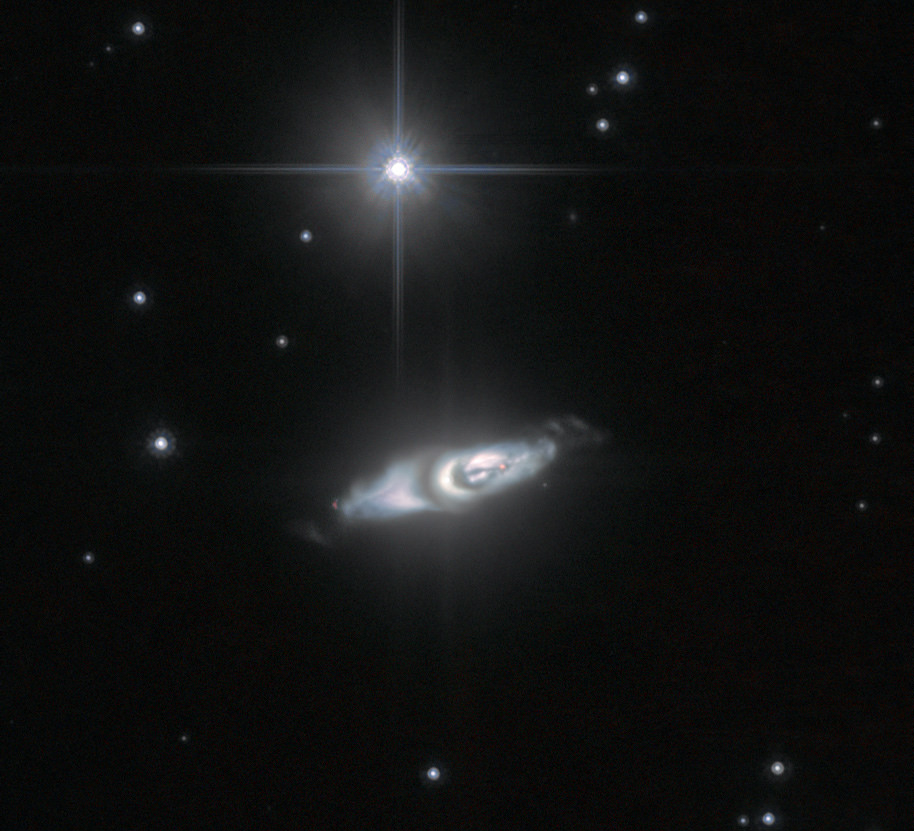[/caption]
Residing in space 6500 light-years away in the constellation of Cepheus, an aged star designated as IRAS 22036+5306 is making its final curtain call. Its stellar play is ending and its making the transition through the protoplanetary, or preplanetary, nebula phase. This isn’t an unusual occurrence, but considering we’ve only been able to witness perhaps a few hundred such events out of the millions of stars we’ve observed – it is a rare visual example. Behold a red giant turning into a white dwarf…
Kudos go to the watchful eye of the Hubble Space Telescope for capturing this ancient celestial oddity. Inside the elaborate enclosure of expelled material is an exposed stellar core – burning hotter than the aspirations of a young actor. Encircling it is a diaphanous cloak of composites – everything from comets to small, rocky bodies. Gases and clumps of material ten thousand times the mass of Earth rocket outward from the poles at speeds of up to 800 000 kilometres per hour. It is the last hurrah.
When its time has passed, IRAS 22036+5306 will transform into a planetary nebula. Intense ultraviolet radiation will ionise the cast-off gases and it will kindle the colorful spectacle which signals the low, slow cool-down until its next evolution. “Studying rarities such as IRAS 22036+5306 provides astronomers with a window into the short and poorly understood phase of stellar evolution when bloated red giant stars pare down to small white dwarfs.” says the ESA/Hubble/NASA team. “For example, mysteries remain about how exactly the dusty torus and jets form.”
Transforming into a planetary nebula may be what awaits the star of our own solar system play – as it is thought to be the eventual destiny of most medium-sized stars. But, our stellar actor might not exit with such splendor since IRAS 22036+5306 is roughly four times the size of the Sun.
And it’s a round of applause we’ll be waiting on for another 5 billion years…


Wait wait wait, we’re seeing a planetary nebula IN THE MAKING!? That’s really cool! I thought it was a galaxy at first. I’d like it if we could get a look at it in greater detail with the JWST.
Or to summarize, even the full pilot shows little signs of meaningful serialization, aside from the hope that Emerson would choose a quality project.-<a href="http://www.bagslady.co.uk/versace-bags-for-lady-101.html">Versace bags for lady</a>
SPAM!
Pretty cool. Now we need more details.